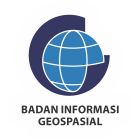OPTIMIZING AQUACULTURE AREA MAPPING IN FLOOD-PRONE COASTAL REGIONS THROUGH THE APPLICATION OF TEXTURE MODELS ON SENTINEL-1 RADAR IMAGERY A CASE STUDY OF DEMAK REGENCY, CENTRAL JAVA
Keywords:
Aquaculture, coastal flooding, GLCM, Sentinel-1Abstract
This study aims to improve the accuracy of aquaculture area mapping in regions prone to tidal inundation, where coastal flooding (rob) causes similarities in characteristics between seawater and coastal aquaculture areas. Rob flooding often leads to the mixing of seawater with aquaculture areas, posing challenges in classification due to spectral and textural similarities. To address this issue, we utilize Sentinel-1 data, and a texture model based on the Gray Level Co-occurrence Matrix (GLCM). This approach aims to distinguish aquaculture areas from other regions with similar characteristics, such as rice fields and aquaculture ponds frequently submerged by rob flooding. By integrating Sentinel-1 radar data with the GLCM texture model, more varied and specific information is provided to enhance classification accuracy. The results indicate that the texture model approach applied to Sentinel-1 radar imagery significantly improves the accuracy of aquaculture area mapping compared to traditional methods. This study provides mapping accuracy results of 81.71% using a texture model for areas affected by tidal flooding. These findings highlight that the texture modeling technique using Sentinel-1 radar imagery provides a more effective solution to overcome mapping challenges in rob flood-prone areas. This approach offers important benefits for land management and flood risk assessment in coastal areas, particularly in Demak Regency, Central Java.
Downloads
Published
How to Cite
Issue
Section
License

This work is licensed under a Creative Commons Attribution-ShareAlike 4.0 International License.






